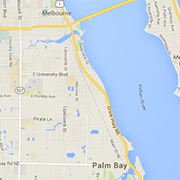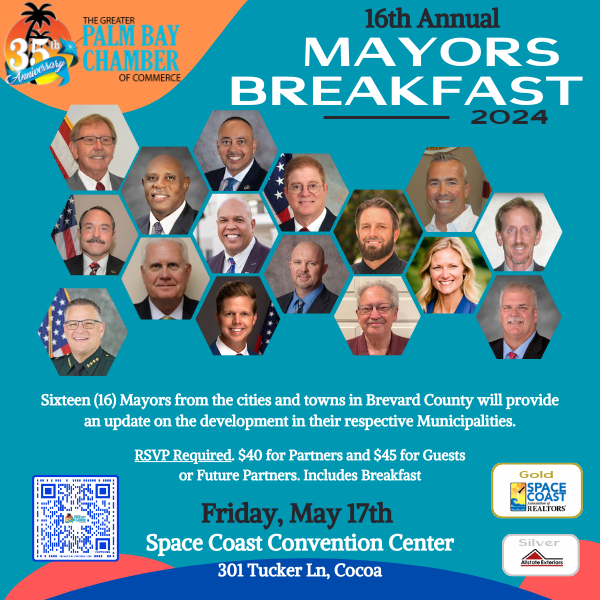At Home on the Eastern Range

On a clear morning, overlooking the horizon of the Merritt Island National Wildlife Refuge, you can catch a glimpse of the sun coming up over the Eastern Range, the space launch area that extends over 10,000 miles from Florida and supports some of the most captivating rocket and missile launches that will pierce the Space Coast skies.
All launches involve a cooperative effort from two federal agencies — the U.S. Air Force at Cape Canaveral Space Force Station and NASA at Kennedy Space Center — in concert with industry efforts including the aerospace company, Range Generation Next.
RGNext provides logistical support for over 90% of commercial and Department of Defense space launches. There are over 1,000 team members working together to provide the engineering, technical and meteorology services needed to get the giant payloads off into orbit.
This group of brilliant minds on the Eastern Range includes some impressive female pioneers in their respective science, technology, engineering, and mathematics disciplines. EverythingBrevard talked with a core group of these women in key leadership positions, responsible for taking us into the next chapter of space innovation.
“One of the best pieces of advice I’ve ever received and that I’ll pass on is, don’t be afraid to be uncomfortable. Remain focused on your goals, but never be afraid to take chances along the way.”
— Sandy Brown, RGNext President
“It is our job to identify those operational systems that could possibly delay or scrub a launch and elevate those concerns so that appropriate project implementation measures can be taken to avoid issues leading up to and on the day of launch.”
— Sally Wilkinson, Systems Engineering Manager
“Like looking at a sunset or peering into the Caribbean Ocean on Earth, it is difficult to describe the beauty of distant galaxies visible in every shot of the Hubble’s spectacular series of Ultra Deep Field images.”
— Lorrie Pharmer, LISC Sustaining Engineering Deputy Manager
“My job is to make sure that all of the weather systems are developed to meet all of the customer and range requirements for launch.”
— Suzanne Siverling, Weather Subsystem Lead
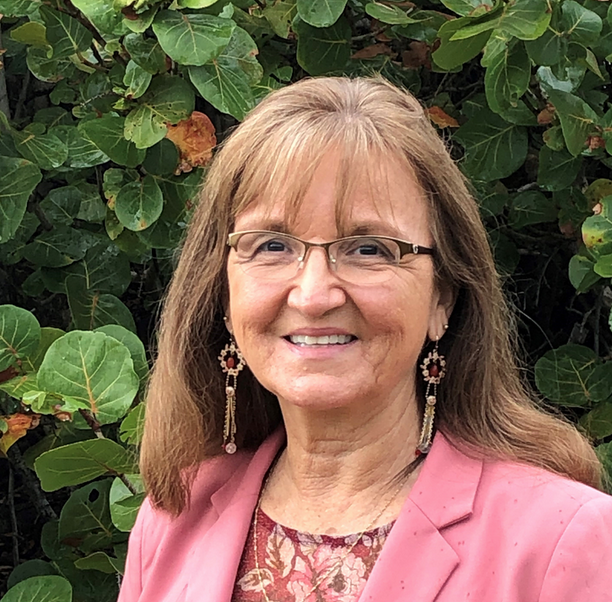
Cindy Hilburn Manager, Eastern Range RGNext, Launch and Test Range Integrated Support Contract (LISC)
What is your role at RGNext?
I provide program management, cost and schedule control, and leadership resulting in achievement of mission success for Eastern Range operations and maintenance. This includes the oversight of all resources needed to execute Space Launch Delta 45 tasking in coordination with any Space and Missile Center directed actions. I lead a team of over 300 personnel, executing Eastern Range operations, maintenance and launch planning, generation and execution.
What impact do you have on whether all systems go on launch day?
New launch programs begin years out from launches and our team is involved in working with the government and launch customers in evaluating the customer’s requirements and the Range capabilities.
Our operations team is responsible for training of personnel, launch planning, generation and configuration of the Eastern Range instrumentation, and execution of launches in support of the United States Space Force. Each of these phases is critical to ensuring instrumentation and personnel are ready to execute launches with high precision on launch day.
Our maintenance team is responsible for keeping the instrumentation electronically and mechanically in a ready state and available to meet Eastern Range operational requirements.
The defining moment that led you to pursue a career in the space-related field?
I had my sight on becoming a teacher. However, in college, while taking a software programming class and enjoying the aspects of the logic associated with it, I knew wanted to become a software programmer.
The defining moment that led me to pursue a space-related job was when the Eastern Range became part of the Strategic Defense Initiative, also called “Star Wars.” President Ronald Reagan proposed that. This futuristic plan to have a system armed with an array of space-based x-ray lasers to detect and deflect any nukes headed toward the United States was quite intriguing to me. I applied for an open position in the software development department and began my technical and operations career with the Eastern Range.
Most rewarding mission?
There is great satisfaction with each hurdle we cross in the advancement of the space program. The first software that I wrote and the first operations position I held was for the U.S. Navy Trident program. I learned so much throughout. Although this was decades ago, even today in 2021, I still have a special sense of pride and excitement every time I get to be part of one of the Navy Strategic Systems Program launches.
In my current position with RGNext, we have achieved multiple hurdles that bring great reward, and I look forward to many more satisfying accomplishments.
What advice do you have for young girls interested in a career in STEM?
Gender does not determine capability. I’d recommend for all young people who have an interest in a career in STEM to pursue their interest and to keep their focus. In all facets of life, we encounter obstacles. When those moments occur, push through it and do not give up. Seek assistance from family, a friend, or a mentor in moments you need a support team. Your perseverance can bring you great satisfaction and reward throughout your career.
What do you hope to accomplish during your tenure?
I want to continue making significant positive contributions to the advancement of the space program and the improved range of the future, as well as continue with growing and developing talent of personnel to help ensure the legacy continues into future generations.
Do you have any hobbies or activities you enjoy doing outside of work?
I enjoy time with family, relaxing outdoors, enjoying nature, playing musical instruments, helping people learn, and participating in multiple activities at my church. I participate on missions teams, local and out-of-country. We enjoy leisurely boat rides, snorkeling for scallops and lobsters, and fishing.

Sandy Brown – RGNext president
What is your role at RGNext?
I joined RGNext as president in October 2019. Our team is made up of some of the best in the business. They are incredibly talented people, and what they bring to the table is a diverse skill set that makes us unique in the marketplace. Our mission at RGNext is to support launches across the U.S. In fact, RGNext supports more than 90% of all Department of Defense and commercial space launches.
Getting those rockets off the ground requires every kind of job you can imagine — from engineers and meteorologists to logisticians and technicians. It is truly a privilege for me to lead such an amazing team that is approximately 1,500 strong. And we are fortunate to have so many women who are trailblazers in their respective fields. In large part, they helped pave the way for me to be in the leadership position I enjoy today, and I am personally grateful to them.
What was the defining moment in your life that led you to pursue a career in the space-related field?
When I was considering my next career move in 2019, I knew I wanted to challenge myself in an entirely different field, and space was always exciting to me. To this day, I remember being glued to the television every time a shuttle launched in the ’80s. Space has always fascinated me, but I never thought a career path existed. It was around the time the United States Space Force Act was being signed to stand up an independent space service, and several commercial space companies were in the news advertising positions to work on everything from a lunar landing to Mars exploration. So, when the RGNext opportunity presented itself, I took a leap and never looked back.
What advice do you have for young girls in high school that are interested in a career in STEM?
Young girls interested in STEM careers should look to join STEM-related clubs and organizations at school and within their communities, pursue internships and seek guidance from professionals within their desired career field. Most importantly, I’d say, never lose sight of your dream.
One of the best pieces of advice I’ve ever received and that I’ll pass on is, don’t be afraid to be uncomfortable. Remain focused on your goals, but never be afraid to take chances along the way.
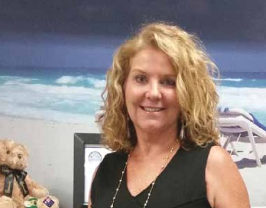
Sally Wilkinson, Systems Engineering Manager
What is your role at RGNext? Is this limited to the Eastern Range?
I manage a team of approximately 50 systems engineers on both the Eastern and Western Ranges. We support engineering projects in execution, including successful testing of systems prior to turning them over to the operational community.
My responsibilities are very diverse. I identify and implement new engineering projects in order to mitigate operational impacts to launch mission-systems. I also ensure technical requirements, architecture diagrams, and human factors and safety hazard analyses are identified and completed.
Walk us through your role on the month, week, day of launch? What impact do you have on whether all systems go on launch day?
A key responsibility of systems engineering is ensuring all systems on both Ranges remain fully mission capable – they’re ready for launch. We lead a team of engineering and operations representatives across major subsystems such as telemetry, radar, weather, etc. It is our job to identify those operational systems that could possibly delay or scrub a launch and elevate those concerns so that appropriate project implementation measures can be taken to avoid issues leading up to and on the day of launch. System engineers’ efforts begin months prior to the actual day of launch; however, we also provide support on the day of launch capturing any anomalies during the actual launch itself.
What was the defining moment in your life that led you to pursue a career in the space-related field?
Growing up on the Space Coast and coming from a military background where my father worked on the Eastern Range instilled in me an interest and love for space and all of the exciting opportunities in this field. I grew up visiting the space center and watching launches from essentially my backyard.
When an opportunity presented itself to work at the Kennedy Space Center in support of the shuttle program, I was able to get first-hand experience and see what a life could be like working for and supporting the exciting world of space. In Brevard County, working for the space program, particularly the shuttle program at the time, was like winning the lottery. It was an adventurous and exciting time for the Space Coast. The shuttle itself looked futuristic! The possibilities seemed endless and I knew I wanted to be a part of it!
What has been your most rewarding mission?
That is like asking a parent to pick their favorite child! Every aspect of my career to date has had significantly rewarding moments. Certainly, being a part of all the shuttle missions and the changes that program brought to the space program in general is near the top of my list.
In my lifetime, I have seen humans walk on the moon and perform walks outside of the shuttle vehicle to conduct experiments and perform repairs. Knowing that I had some role to play in all of that is extremely rewarding! More recently, being a part of returning man to space has been equally rewarding. To see the many different launch customers now expressing a desire to launch their payloads and their vehicles into space and needing the help of my company and people like me is beyond rewarding and fulfilling. How many people get to say they really are a rocket scientist?
What advice do you have for young girls in high school that are interested in a career in STEM?
The space program is diverse, in both people and skills. The career possibilities are broad and numerous. Whether you want to be a systems engineer, a hardware engineer, a software engineer, an operations analyst or some other technical role, having a STEM degree opens up so many doors and opportunities for young women. Hardware and software engineering programs as well as systems engineering programs provide the foundation to take on just about any engineering position in a space-related field. We also employ engineers with physics, astronomy and meteorology degrees, among others.
We have engineers involved in robotics clubs and doing research assignments and internships in support of their area of interest. For young women just beginning their path down a career in a STEM-related field or well into it, looking for opportunities to showcase their leadership, team building and communication skills are all plusses that will help broaden their opportunities.
What do you hope to accomplish during your tenure? Any particular mission you're looking forward to?
I feel I have already accomplished a lot during my years of working for the space program but am particularly looking forward to two things: more manned launches and more launch customers. The vision for the Eastern and Western Ranges is to operate like an airport with multiple launches occurring each day. For young women starting down a path of wanting to work for the space program, these are exciting times. We have never seen so much launch activity as is happening now, and this is only the tip of the iceberg.
What is your mantra while working with RGNext on the Eastern Range?
My ideas, contributions and attitude are making a difference.
Knowing that anything I can do to help ensure the mission stays on track and finding ways for us to be more efficient and competitive are all contributing towards a range of the future that will help keep America at the forefront of space.
Do you have any hobbies or activities you enjoy doing outside of work? Community service or other involvement?
Outside of work, I like to exercise the other half of my brain. While on the job, I tend to work the more analytical side of my brain so it’s nice to find avenues to do things of a more creative and artistic side when not at work. Anything outdoors is a big love of mine including anything to do with the water and exercising outdoors.
I love to experiment with interior design, whether it’s my own home or others’. I always seem to be in the middle of a house project. My fiancé and I work with one of our local charities to do and give what we can, as well. All of these things help to provide that quality work/life balance that is so important to our mental and physical health.
Tell us a little bit about your family.
I am getting married later this year to, surprise, an engineer! We have been together several years and although COVID-19 has delayed some of our planning, we are looking forward to making it happen in 2021. Although I never had children of my own, my fiancé has a daughter that I am very close to and have actually helped mentor her in her career. I also have three nieces and a nephew that I love dearly. Many of them are in various stages of starting their own careers and families so my extended family is quite large. Our family birthday and holiday celebrations include about 25 of us, so there is never a dull moment and the conversations are lively.
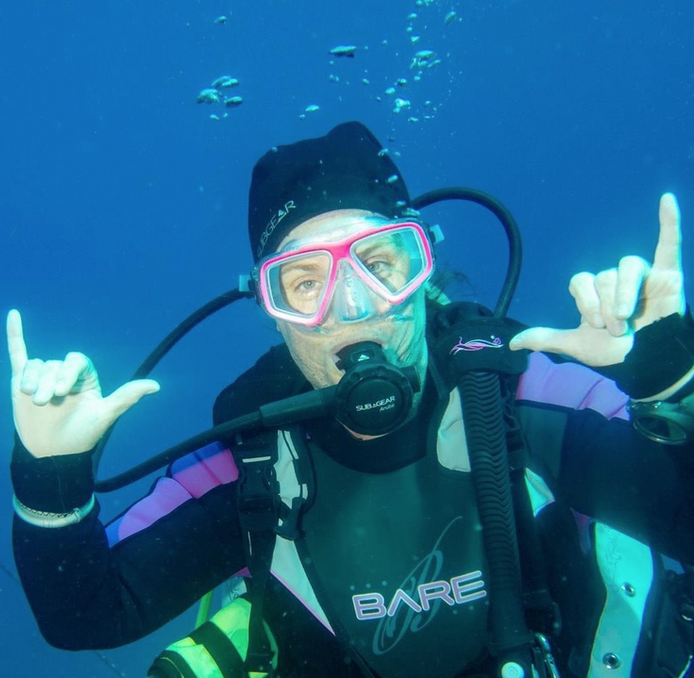
Lorrie Pharmer, LISC Sustaining Engineering Deputy Manager
What is your role at RGNext?
As the engineering department manager for the Eastern Range, I provide leadership to eight engineering managers who manage 100+ employees performing hardware, software, configuration control, reliability assessment and operations performance monitoring for the launch and test range systems. My team also supports our Western Range counterparts who are under direct management by the LISC Sustaining Engineering Manager, Nick Pelster. My role is 95% Eastern Range and 5% support to the Western Range in order to promote consistency of engineering services between the ranges.
Walk us through your role on the month, week, day of launch?
Engineering timelines are more in months and years in advance of launch days. Our job is to prevent system failures, track emerging new requirements and deploy system upgrades and enhancement in time to prepare operators to use them for launch operations.
What impact do you have on whether all systems go on launch day?
Engineering should not be needed on launch days if we have done our job of preparing the systems to perform reliably. Engineers often support the capture and communication of system issues during a launch and support systems that may require quick-reaction troubleshooting assistance during the launch count. We return them to Full Mission Capable status or Partially Mission Capable status, returning launch status from RED/No-Go to GREEN/Go for launch.
What was the defining moment in your life that led you to pursue a career in the space-related field?
I am a third-generation Floridian and watching space launches from Space Coast beaches with friends and family has always been a part of my life.
What has been your most rewarding mission?
The Hubble Space Telescope mission allows people to see far beyond our planet and peer at stars, planets, nebulae and galaxies. Hubble photos will inspire generations to explore the far reaches of space. Like looking at a sunset or peering into the Caribbean Ocean on earth, it is difficult to describe the beauty of distant galaxies visible in every shot of the Hubble's spectacular series of Ultra Deep Field images. Google them and see for yourself!
What advice do you have for young girls in high school that are interested in a career in STEM?
I’d give the same advice I would give to young boys. Develop a love and curiosity for learning and solving problems. You must ask questions, be a critical thinker and be willing to admit you don't always have the answers. Math is the basis of every STEM (science, technology, engineering, & mathematics) field. Learn as much math as you can. Math is like a foreign language, the more you use it, the more quickly you will solve problems using it.
What do you hope to accomplish during your tenure? Any particular mission you're looking forward to?
My goal is to see gains in range systems capabilities during my tenure. Specifically, we are very close to being able to collect, process, and distribute high bandwidth radio frequency signals. This capability will enable more launch vehicle status and video display to be seen by humans on the ground as rockets fly into space. Range customers have implemented on-board video cameras that provide awesome views of their spacecraft and payload deployments.
What is your mantra while working with RGNext on the Eastern Range?
My personal mantra for myself is: Be sure to understand the problem before offering advice.
Do you have any hobbies or activities you enjoy doing outside of work? Community service or other involvement?
I enjoy traveling and scuba diving with my friends and family outside of work. For community service, participating in community 3-5K run/walk events are a fun way to support great service organizations in our community, like the American Cancer Society and United Way.
Tell us a little bit about your family.
My husband and I have lived in Brevard County for 32 years. We have raised two kids, a daughter who is pursuing a doctoral degree in cognitive psychology and a son who will graduate from Florida Atlantic University this year with a bachelor’s degree in ocean engineering.
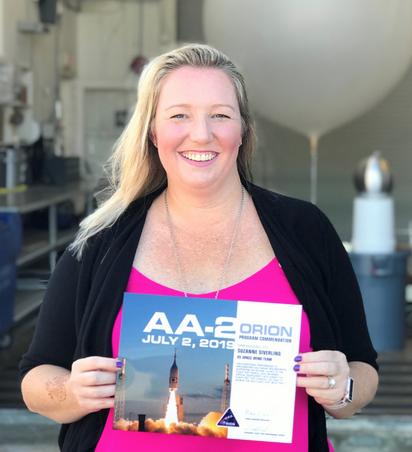
Suzanne Siverling, Weather Subsystem Lead
What is your role at RGNext?
I work with the 45th Weather Squadron, 30th Weather Squadron, 45th RANS, Space and Missile Systems Center, or SMC, and RGNext Weather Operations to determine the priorities of upgrading and replacing all of the weather systems used for daily operations and for launch weather support.
Walk us through your role on the month, week, day of launch?
Working with so many different groups across both the Eastern Range and Western Range requires a lot of discussions. I attend many meetings! I hold monthly Subsystem Working Group meetings that provide an opportunity for all departments to discuss their issues, concerns and ideas with the weather subsystems. I also attend meetings to monitor the progress on the current projects we have going on. If there are any concerns, I work with all agencies to try to resolve them.
I also assist weather operations with launch support when they need a meteorologist.
What impact do you have on whether all systems go on launch day?
I have an indirect impact on launch day. My job is to make sure that all of the weather systems are developed to meet all of the customer and range requirements for launch.
What was the defining moment in your life that led you to pursue a career in the space-related field?
I didn’t technically pursue a career in the space-related field. I’m a meteorologist, which is my background. I pursued meteorology because when I was a kid growing up in Ohio, the clouds always moved from west to east. We used to come to Jupiter, Florida on vacation every year and I noticed the clouds in Jupiter always moved from east to west. I just had so many questions about why the clouds were different. Then we were down here for a hurricane one summer, and I just loved it. Those two events sealed my interest in weather. Plus, the movie Twister was just awesome.
My previous job was a forecast meteorologist for ENSCO, Inc. where I did forecasting for United Airlines. I was in that job for three years before there was an opening for a meteorologist at the Cape Weather Station. RGNext manages the daily and launch support operations at the Cape Weather Station. We are responsible for releasing weather balloons for upper atmosphere data. I was originally hired to quality control the upper-level wind data from the weather balloons and send it off to the launch customers. The launch customers use the upper-level wind data for inertial loads calculations on the trajectory of the flight vehicle. I was promoted to supervisor at the Weather Station and did that for about four years. Then last May, a position opened up in engineering that I decided to pursue, which is how I got to where I currently am.
What has been your most rewarding mission?
Well, I have two favorite missions. The first is the first Falcon Heavy Demo mission. The Cape Weather Station is one mile from LZ-1 and LZ-2, the SpaceX landing zone complex. It was incredible to see two boosters successfully return! I am the self-proclaimed, completely unverified, Closest Person in the World to the Falcon Heavy landing.
My second favorite mission was the Orion Ascent Abort-2. This mission was to test the Orion spacecraft abort capabilities. This was one of my favorite missions because I had the opportunity to work closely with the NASA team in development of the balloon schedule requirements that were used for the mission. I actually received an award from NASA for assisting with this launch.
What advice do you have for young girls in high school that are interested in a career in STEM?
There are so many opportunities for young girls wanting to pursue a career in the STEM field. When I was a junior in high school, there was a two-week program at Northland College that was geared toward introducing high school students to introductory STEM classes. We had classes in meteorology and astronomy, where we actually earned college credit. This experience made me realize I had a passion for meteorology. Girls should look around because I know these opportunities are still out there.
I am a local Girl Scout leader and there are numerous badges toward STEM girls of all ages to complete.
Finally, I would tell girls to look into opportunities in the sector you are interested in. I completed an internship at a local television station, attended professional society annual meetings, attended weather conferences and became a member of the local/school professional societies.
What do you hope to accomplish during your tenure? Any particular mission you're looking forward to?
During my tenure, I hope to continue improving relationships with the ranges and the launch customers. The Eastern and Western Ranges have more weather instrumentation than anywhere in the world.
I assist operations with launches when they need me.
What is your mantra while working with RGNext on the Eastern Range?
My mantra as a meteorologist is “Got CAPE.” “Got CAPE” was our college’s American Meteorological Society saying. It means Convective Available Potential Energy, or CAPE, which is a measure of the instability in the atmosphere. High CAPE values mean large instability, which means severe thunderstorms. This is my mantra because I love a good severe thunderstorm.
Do you have any hobbies or activities you enjoy doing outside of work? Community service or other involvement?
Well, most of my “hobbies” revolve around my daughter. I do a lot of sitting at the ice rink for numerous hours a week watching my daughter ice skate. I am also her Girl Scout troop co-leader and cookie mom, so you know where to come when you want Girl Scout cookies.
My hobbies include my Sunday morning Dance Mania or kickboxing class, playing Call of Duty with my friends, swimming, going to Disney, taking Disney cruises and hanging out with my family.
Tell us a little bit about your family.
My husband, TJ, works for Brevard County Emergency Management. We have an 8-year-old daughter and an American hairless terrier puppy named Brutus.


